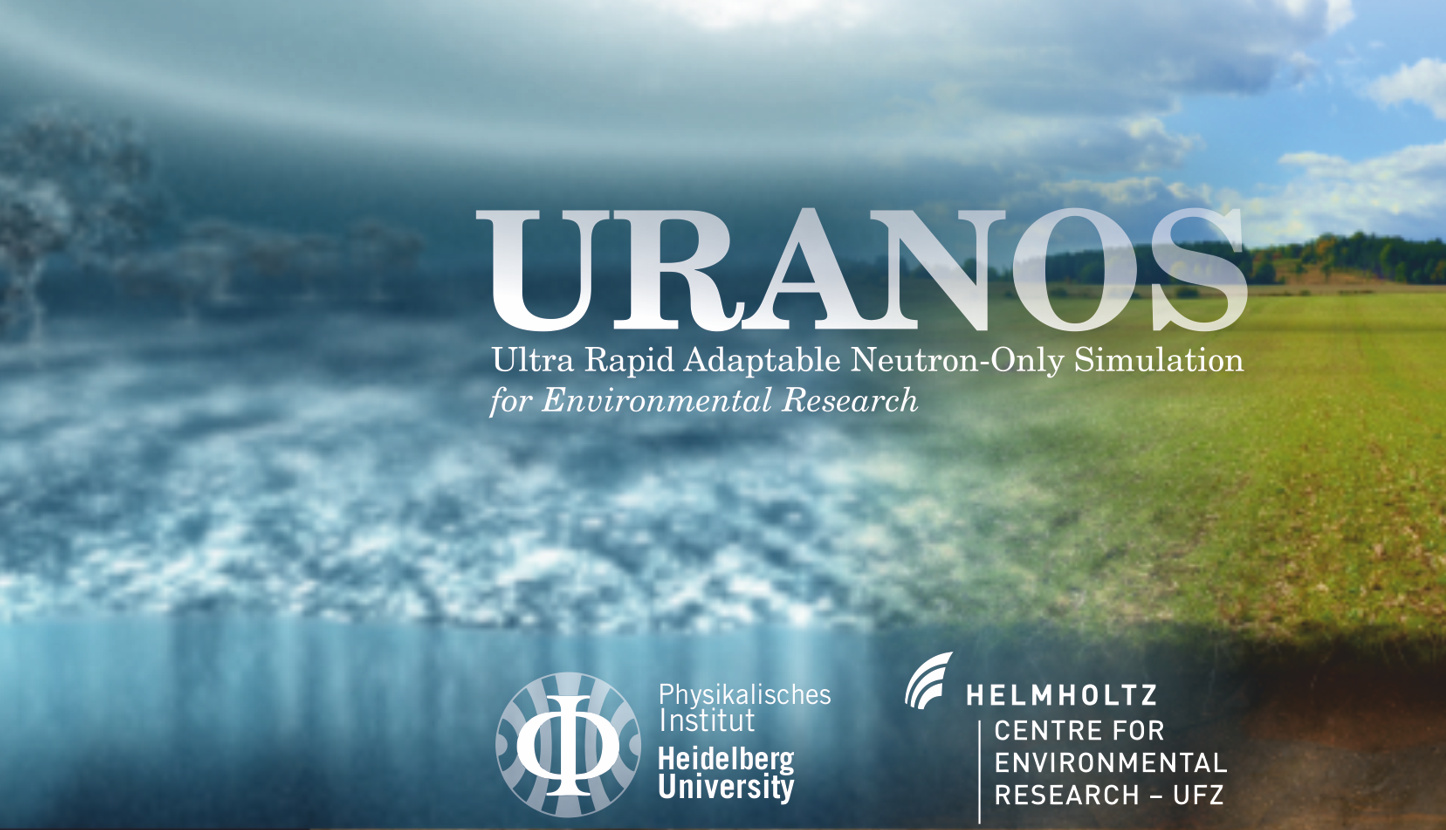


URANOS - The Ultra Rapid Adaptable Neutron-Only Simulation for Environmental Research
M. Köhli 1, M. Schrön 2, S. Zacharias 2, and U. Schmidt 1
1 Physics Institute, Heidelberg University,
2 Department of Monitoring and Exploration Technologies, UFZ Leipzig
Köhli, M., Schrön, M., Zacharias, S., and Schmidt, U.: URANOS v1.0 – the Ultra Rapid Adaptable Neutron-Only Simulation for Environmental Research, Geosci. Model Dev., 16, 449–477, 2023. doi:10.5194/gmd-16-449-2023
About
URANOS is a Monte Carlo toolkit specifically tailored for environmental sciences. It can be used to simulate cosmogenic neutron radiation near the Earth's surface and to study its response to environmental factors, such as soil water content, snow, or biomass.
Key features:
- stand-alone executable,
- parallelization (can run performantly in multiple parallel instances),
- graphical user interface (optional) for the command line.
- 3D voxel engine to allow the generation of complex environments
User community
Stay up to date! We'd like to encourage you to subscribe to the mailing list of URANOS users by writing an email to:
uranos-users-registration@ufz.de
This way we can inform you about important updates and new features of the software. You can also share your experience or ask questions to the user community by mailing to:
Code, Downloads, & Wiki
Publications using URANOS

If you use URANOS in a scientific publication, please forward a copy to us. This will help to support the development of URANOS in the future.
